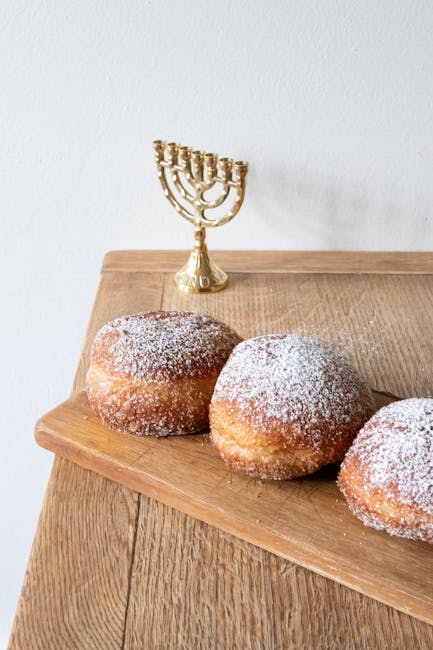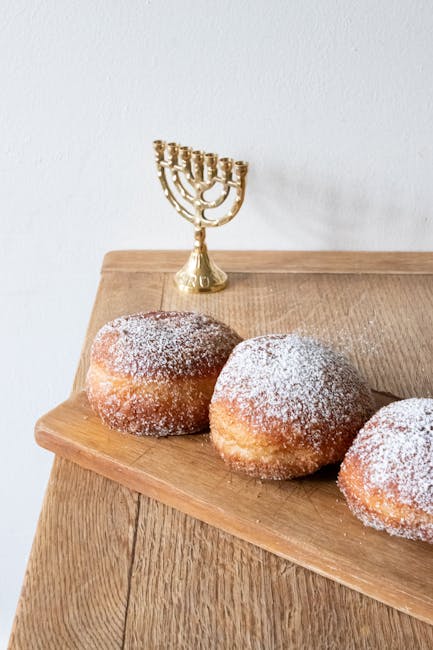The humble Yorkshire pudding, a seemingly simple dish of crisp, golden-brown batter, holds a surprisingly rich and complex history within British cuisine. Far from being merely a side dish, as it’s often presented today, its origins stretch back centuries, evolving from a practical necessity to a culinary icon. Early forms of Yorkshire pudding, or dripping pudding as it was sometimes known, emerged in the 18th century, predating the widespread use of the name Yorkshire pudding which became common in the 19th century. These early versions utilized leftover beef dripping from roasting, a byproduct of a relatively expensive cut of meat. This made the dish a thrifty and resourceful way to utilize resources, reducing food waste and providing a hearty addition to the meal.
The use of beef dripping was crucial to both the flavour and texture of the original Yorkshire pudding. The high fat content of the dripping contributed to the characteristic puffiness and crisp exterior, a feature that remains a hallmark of the dish today. While the exact origins remain debated, its association with Yorkshire is strong, likely due to the region’s strong agricultural tradition and its historical prominence in beef production. Interestingly, the batter itself is remarkably simple, consisting primarily of flour, eggs, and milk or water. This simplicity, however, belies the skill required to achieve the perfect texture – a delicate balance between a light and airy inside and a flawlessly crisp exterior. Many regional variations exist across the UK, reflecting local preferences and ingredient availability.
In modern British culture, the Yorkshire pudding occupies a unique and cherished place. It’s a staple of the traditional Sunday roast, a cornerstone of family gatherings and celebratory meals. Statistics show that it features in the majority of Sunday roasts across the UK, often served alongside roast beef, lamb, or pork, and accompanied by roast potatoes and vegetables. Beyond its role in the Sunday roast, it’s also a versatile ingredient, finding its way into other dishes such as Yorkshire pudding wraps or being used as a base for savoury toppings. This enduring popularity speaks volumes about its cultural significance, showcasing its adaptability and enduring appeal across generations. Its simple ingredients and satisfying texture continue to resonate with home cooks and professional chefs alike, ensuring that the Yorkshire pudding remains a beloved and integral part of British culinary heritage.
Ingredients and Measurements
Creating the perfect Yorkshire pudding hinges on precise measurements and the quality of your ingredients. Don’t be tempted to substitute or guess – accuracy is key to achieving that light and airy texture we all crave.
For this recipe, we’ll be making enough Yorkshire puddings for approximately 6 people, easily scalable depending on your needs. The measurements are given in both metric and imperial units for convenience.
Flour: You’ll need 140g (1 cup + 2 tablespoons) of plain flour. Using plain flour (all-purpose flour) is crucial; self-raising flour will result in a different texture, likely making your puddings heavier and less crisp. Ensure your flour is fresh and properly sifted before measuring to avoid lumps. Sifting removes any clumps and aerates the flour, leading to a smoother batter and lighter puddings.
Eggs: Four large eggs are required for this recipe. The size of your eggs can slightly affect the final result, so try to use consistently sized eggs. Room temperature eggs are essential. Cold eggs will result in a lumpy batter that won’t rise as well. Allow your eggs to sit out at room temperature for at least 30 minutes before you begin.
Milk: You’ll need 280ml (1 cup) of milk. Again, using room temperature milk is important for a smooth batter. The type of milk is less critical, although whole milk will generally produce slightly richer puddings. Skimmed milk will work fine, though the results might be slightly less decadent.
Water: 280ml (1 cup) of cold water is added to the batter. Using cold water helps to create a light and airy batter. Don’t substitute with warm or hot water, as this will affect the texture of the final product.
Oil or Fat: You’ll need approximately 2 tablespoons of beef dripping, vegetable oil, or a combination of both for each Yorkshire pudding tin cavity. Beef dripping is traditionally used and imparts a rich flavour, but vegetable oil is a perfectly acceptable substitute. Ensure the oil is very hot before adding the batter; this is paramount for the puddings to rise properly. Using a deep, heavy-based Yorkshire pudding tin is recommended as this helps to maintain even heat distribution and prevent uneven cooking.
Other Considerations: While not strictly ingredients, a good quality whisk and a jug for mixing are invaluable tools. A jug will make it easier to pour the batter into the hot oil without splashing. Resting the batter for at least 30 minutes, and up to a few hours in the refrigerator, is recommended. This allows the gluten to relax, resulting in lighter and crispier puddings. Don’t overmix the batter; once the ingredients are combined, stop mixing. Overmixing develops the gluten, resulting in tough Yorkshire puddings.
Following these guidelines meticulously will help you create perfect Yorkshire puddings every time. Remember, practice makes perfect, so don’t be discouraged if your first attempt isn’t flawless. Enjoy the process and the delicious results!
Equipment List
Making perfect Yorkshire puddings requires the right tools. While you might be able to improvise with some items, investing in the right equipment will significantly improve your results and make the process easier. This list details the essential and recommended equipment for achieving those gloriously crisp and airy Yorkshire puddings.
1. Yorkshire Pudding Tin: This is arguably the most crucial piece of equipment. A good quality, heavy-duty tin is essential for even cooking and preventing sticking. Avoid flimsy tins as they won’t distribute heat evenly, leading to unevenly cooked puddings. The ideal size depends on your oven and the number of puddings you want to make. A standard tin typically holds 6-8 puddings, each with a 3-4 inch diameter. Consider purchasing a tin with a non-stick coating for easier cleaning and to prevent sticking, though proper preparation is still key.
2. Measuring Jug: Accuracy is key in baking. A clear measuring jug with millilitre and fluid ounce markings is essential for precise measurements of your batter ingredients, especially the milk and eggs. A 1-litre jug is generally sufficient. Using a measuring jug avoids guesswork and ensures consistent results from batch to batch. Avoid using cups or other imprecise measuring tools.
3. Mixing Bowls: You’ll need at least two mixing bowls. One large bowl (at least 1.5-litre capacity) for mixing the batter and a smaller bowl (approximately 500ml) for whisking the eggs separately. Choose bowls made of stainless steel or glass as these are non-reactive and easy to clean. Plastic bowls can sometimes retain odours.
4. Whisk: A good quality whisk is essential for creating a smooth, lump-free batter. A balloon whisk is ideal for incorporating air into the mixture, which contributes to the rise of the puddings. A stainless steel whisk is durable and easy to clean. Ensure your whisk is large enough to comfortably work within your mixing bowls.
5. Sieve: While not strictly essential, using a fine-mesh sieve to sift the flour before adding it to the batter helps to remove any lumps and aerate the flour, leading to a lighter batter. This step is particularly helpful if you’re using a lower-grade flour. A stainless steel sieve is recommended for its durability and easy cleaning.
6. Spatula or Wooden Spoon: A sturdy spatula or wooden spoon is useful for folding in the flour to the egg and milk mixture gently. This helps to avoid over-mixing the batter, which can result in tough Yorkshire puddings. Avoid using a metal spoon or spatula as it may damage the non-stick coating on your tin (if applicable).
7. Oven Gloves or Mitts: Essential for safely handling the hot Yorkshire pudding tin when placing it in and removing it from the oven. Choose oven gloves or mitts that are heat-resistant and long enough to protect your hands and forearms from burns.
8. Baking Tray (Optional): A baking tray placed at the bottom of your oven can catch any spills from the Yorkshire pudding tin, which can be useful for easier cleaning.
Having all these items readily available will make the Yorkshire pudding baking process smoother and more enjoyable. Remember, preparation is key for achieving perfectly crisp and fluffy Yorkshire puddings!
Preparation of the Batter (Mixing and Resting)
Creating the perfect Yorkshire pudding batter is a crucial step in achieving those light and airy results. The mixing technique and resting time are paramount to success. We’ll use a simple yet effective method that prioritizes achieving the right consistency and allowing the gluten to relax.
Begin by sifting 200g of plain flour into a large mixing bowl. Sifting removes lumps and aerates the flour, resulting in a smoother batter. This is a vital step for achieving a light texture, so don’t skip it!
Next, add 4 large eggs to the flour. Use eggs at room temperature; this ensures they emulsify better with the other ingredients, leading to a more even batter consistency. Cold eggs can result in a lumpy batter and less fluffy puddings.
Gradually whisk in 300ml of cold milk. It’s crucial to add the milk slowly whilst continuously whisking. This prevents lumps from forming and allows for a smooth, homogenous mixture. Avoid using a food processor or blender; the vigorous action can over-develop the gluten, leading to tough puddings. A good quality whisk and some elbow grease are key here.
Continue whisking until the batter is completely smooth and lump-free. The consistency should be similar to single cream – pouring easily but not runny. If it’s too thick, add a little more milk; if it’s too thin, add a tablespoon or two of flour and whisk well.
Once the batter is perfectly smooth, season generously with salt and freshly ground black pepper. A pinch of salt enhances the flavour of the puddings, while black pepper adds a subtle kick. The amount of seasoning is to your taste but don’t be shy!
The resting period is crucial. Once the batter is mixed, cover the bowl with cling film and leave it to rest in a cool place for at least 30 minutes, or preferably 2-4 hours. This allows the gluten to relax, resulting in a lighter and crispier pudding. The longer the resting time, the better the results, although 30 minutes is the absolute minimum.
During the resting period, the flour will fully hydrate, and the starches will begin to gelatinize. This process leads to a batter that is less prone to collapsing during cooking and produces a more tender and evenly cooked pudding. You’ll observe some small bubbles forming on the surface of the batter; this is a good sign!
Before using the batter, give it a gentle whisk to ensure everything is well combined again. Avoid over-whisking at this stage, as this could re-introduce air bubbles and affect the final texture. Now you’re ready to proceed to cooking your Yorkshire puddings!
Cooking the Yorkshire Puddings (Oven Temperature, Tin Preparation)
Achieving perfectly crisp and towering Yorkshire puddings hinges on two crucial factors: the oven temperature and the preparation of your pudding tin. Getting these right will significantly impact the final result, transforming your puddings from soggy disappointments to magnificent culinary triumphs.
Oven Temperature: The Key to Puffiness
The oven needs to be incredibly hot. We’re talking 220°C (200°C fan/Gas Mark 7), or even hotter if your oven allows. This intense heat is essential for creating the rapid expansion of the batter that leads to those characteristic tall, airy Yorkshire puddings. A lower temperature will result in flat, undercooked puddings. Preheating the oven for at least 30 minutes is absolutely crucial. Don’t skimp on this step; it ensures the oven is at the correct temperature and ready to instantly crisp the batter.
Tin Preparation: The Foundation for Success
The choice of tin is important. A good quality, preferably dark-coloured, heavy-based tin will retain heat better and contribute to even cooking. Avoid non-stick tins, as they often don’t get hot enough to create the perfect crisp base. The tin size will depend on your recipe and preference; however, individual Yorkshire pudding tins (around 2.5-3 inches in diameter) are ideal for achieving perfectly formed puddings. Muffin tins work well too, offering a slightly smaller, more manageable size.
The Hot Fat Method: Maximising Crispiness
The hot fat method is paramount. You need to use a generous amount of hot, rendered beef dripping or vegetable oil. About 1-2 tablespoons per Yorkshire pudding tin is ideal. Never use cold fat; it will prevent the batter from cooking properly and result in flat, greasy puddings. The fat needs to be hot enough to almost smoke – this ensures instant crisping of the batter as soon as it hits the hot surface. Pour the hot fat into the individual sections of your preheated tin, ensuring it’s evenly distributed and coating the base and sides.
Important Considerations:
Avoid opening the oven door during cooking. The sudden temperature drop will cause the puddings to collapse. Resist the urge to peek! The cooking time will vary slightly depending on your oven and the size of your puddings, but generally, you should bake for 20-25 minutes, or until golden brown and puffed up. Once cooked, carefully remove the puddings from the tin and serve immediately. Their crispiness will diminish as they cool.
Troubleshooting:
If your Yorkshire puddings are flat, your oven may not be hot enough, or you may have used cold fat. Try increasing the oven temperature and ensuring the fat is smoking hot before adding the batter. If they are soggy, you may have overcrowded the tin or not used enough fat. Experiment with different quantities and tin sizes to perfect your technique. Remember, practice makes perfect!
Serving Suggestions (Accompaniments)
Yorkshire puddings are incredibly versatile and lend themselves to a wide array of accompaniments, transforming from a simple side dish to the star of the show depending on your chosen pairings. The key is to balance the crisp, airy texture of the pudding with complementary flavors and textures.
The Classic Roast Dinner: No discussion of Yorkshire puddings is complete without mentioning their traditional role in the British roast dinner. Aim for a hearty and flavorful combination. A generous serving (approximately 2-3 puddings per person) works perfectly alongside succulent roast beef (around 150-200g per person), tender roast potatoes (approximately 200g per person), and a medley of seasonal vegetables such as carrots, peas, and green beans (approximately 150g of mixed vegetables per person). A rich gravy, made using the beef drippings, is essential; approximately 100-150ml per person will ensure ample coverage.
Elevated Options: For a more sophisticated take, consider pairing your Yorkshire puddings with gourmet ingredients. Think slow-roasted lamb shoulder (around 180g per person), perfectly roasted root vegetables like parsnips and sweet potatoes (150g per person), and a vibrant red wine reduction to complement the lamb’s richness. A sprinkle of fresh rosemary or thyme adds a touch of elegance.
Beyond the Roast: Yorkshire puddings aren’t limited to roast dinners. Their adaptability shines through in various contexts. They make a fantastic base for a hearty breakfast or brunch. Fill them with scrambled eggs (2-3 eggs per person), smoked salmon (50g per person), and a dollop of crème fraîche or sour cream. Alternatively, a simple filling of creamy mushrooms (100g per person) sautéed with garlic and herbs provides a satisfying savoury option.
Vegetarian & Vegan Adaptations: For vegetarian options, consider filling your Yorkshire puddings with a rich lentil stew (150g per person), roasted vegetables, or a creamy mushroom and spinach filling. Vegan options require careful consideration of your ingredients, ensuring all components are plant-based. A hearty vegan stew, mushrooms with lentils, or even a spiced chickpea and vegetable filling can work wonderfully. Remember to check all ingredients are suitable for vegan diets.
Presentation Tips: The presentation of your Yorkshire puddings and their accompaniments is crucial. Arrange the puddings attractively on a platter or individual plates. Consider using a piping bag to fill the puddings for a more refined look. Garnish with fresh herbs, a drizzle of extra virgin olive oil, or a sprinkle of sea salt to enhance the visual appeal. Always ensure your puddings are served immediately after cooking for optimal crispness.
Storage and reheating: Leftover Yorkshire puddings can be stored in an airtight container at room temperature for up to 2 days or frozen for up to 3 months. To reheat, simply pop them in a preheated oven at 180°C (350°F) for 5-10 minutes until warmed through and crispy. Avoid reheating in the microwave, as this can result in soggy puddings.
Troubleshooting and Common Mistakes
Making perfect Yorkshire puddings can feel like a culinary alchemy, but understanding common pitfalls and how to overcome them will significantly increase your success rate. Let’s delve into some frequent problems and their solutions.
Soggy or Flat Puddings: This is arguably the most common issue. It usually stems from one or more of the following: Insufficiently hot oil. Your oil needs to be smoking hot – around 220°C (425°F) – before adding the batter. Use a deep-fat thermometer to ensure accuracy. A lower temperature will result in the batter steaming rather than crisping. Too much batter per tin. Overfilling the Yorkshire pudding tins leads to dense, flat puddings that struggle to rise properly. Aim for about 2/3 full for standard-sized tins. Lumpy batter. Ensure your batter is completely smooth. Any lumps will prevent even cooking and lead to uneven rising. Stale ingredients. Using old baking powder or eggs that aren’t fresh can negatively impact the rise. Always check expiry dates.
Burnt Puddings: While achieving a golden-brown exterior is desirable, burnt Yorkshire puddings are a disaster. The main culprit is usually overly high heat. While the initial temperature needs to be high, you might need to slightly reduce the oven temperature after the first 15-20 minutes to prevent burning, depending on your oven. Overbaking is another common cause. Keep a close eye on them and remove them as soon as they are golden brown and puffed up. Also, ensure the oil is the correct depth in your tin. If the oil level is too low, the bottom of the pudding will burn before the top is cooked.
Undercooked Puddings: Conversely, undercooked Yorkshire puddings will be pale, soft, and doughy. This usually indicates insufficient baking time or an oven temperature that’s too low. Make sure your oven is preheated to the correct temperature (220°C/425°F) and that your puddings bake for the recommended time. If you find they’re still undercooked after the specified time, add another 5-10 minutes but keep a close eye on them to prevent burning.
Unevenly Cooked Puddings: This often happens due to uneven heat distribution in the oven. Try rotating the baking tray halfway through the cooking time to ensure even browning and cooking. Overcrowding the baking tray can also lead to uneven cooking as some puddings might not receive enough heat. Use a tray that’s appropriate for the number of Yorkshire puddings you’re baking.
Recipe Ratio Issues: Sticking meticulously to the recipe’s ingredient ratios is crucial. Using too much flour will result in heavy, dense puddings, while too much liquid will produce flat ones. Precise measurements are key to success. Use a measuring jug for liquids and kitchen scales for dry ingredients for the best results. Don’t overmix the batter; overmixing develops the gluten, leading to tough Yorkshire puddings. Mix only until just combined.
Resting the Batter: Many recipes recommend resting the batter. This allows the flour to fully hydrate and the gluten to relax, leading to a lighter and fluffier result. Ignoring the resting time can compromise the final texture. Follow the recipe’s instructions carefully.
Using the Wrong Type of Oil: Using an oil with a low smoke point will lead to burning and a poor flavour. Use a high-smoke-point oil, such as beef dripping or vegetable oil.
Remember: Practice makes perfect! Don’t be discouraged if your first attempt isn’t flawless. Learn from your mistakes, adjust your technique, and you’ll soon be mastering the art of the perfect Yorkshire pudding.
Homemade British Yorkshire Pudding: Recommendations
Your perfectly golden, crisp Yorkshire puddings are ready! To ensure you get the most out of these culinary delights, follow these recommendations for serving, storage, and pairing with other dishes.
Serving Suggestions: Yorkshire puddings are incredibly versatile. Traditionally, they are served alongside a roast dinner, acting as a vessel for gravy and accompanying the meat and vegetables. However, their adaptability extends far beyond this classic pairing. Consider serving them as a light starter, filled with creamy mushroom duxelles or a vibrant spinach and ricotta mixture. They also make a fantastic accompaniment to steak, game, or even as a fun addition to a hearty brunch spread. For a unique twist, try mini Yorkshire puddings as canapés, filled with smoked salmon and crème fraîche, or as a quirky dessert container for ice cream or custard.
Complementary Dishes: The rich, savory flavor profile of Yorkshire puddings complements a wide array of dishes. Classically, they shine alongside roast beef, lamb, or pork, with all the accompanying roast vegetables like potatoes, carrots, and parsnips. For a lighter meal, try pairing them with grilled chicken or fish, perhaps with a lemon-herb sauce. Vegetarian options abound; consider serving them with a hearty lentil stew, roasted vegetables, or a mushroom wellington. The possibilities are truly endless!
Storage Conditions: For optimal freshness and texture, it is recommended to consume Yorkshire puddings immediately after cooking. Their crispness diminishes significantly upon cooling. However, if you have leftovers, allow them to cool completely before storing. Store leftover Yorkshire puddings in an airtight container in the refrigerator for up to 2 days. They can be reheated gently in a low oven (around 150°C/300°F) or in a toaster oven until warmed through and crisp. Avoid microwaving, as this will likely make them soggy. Freezing is not recommended, as it significantly impacts the texture.
Nutritional Information (per Yorkshire Pudding – approximate, based on a medium-sized pudding): The nutritional content will vary depending on the recipe and ingredients used. However, a typical Yorkshire pudding will contain approximately: Calories: 100-150; Fat: 8-12g; Saturated Fat: 2-4g; Carbohydrates: 15-20g; Sugar: 1-2g; Protein: 3-5g. This information is an estimate and may differ based on the specific recipe and ingredients. For precise nutritional information, you should calculate it yourself using a nutrition calculator and your specific ingredients.
Important Note: While Yorkshire puddings are a delicious treat, they are relatively high in fat and carbohydrates. Enjoy them in moderation as part of a balanced diet. Adjusting the amount of fat in the recipe can slightly impact the nutritional values.





